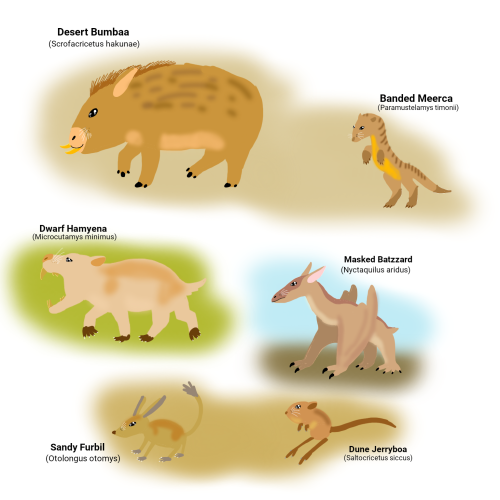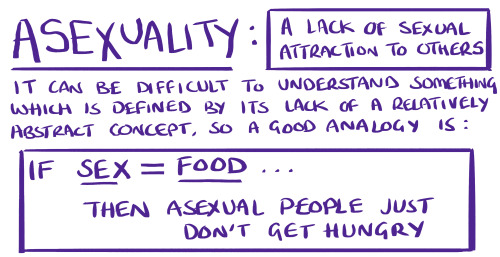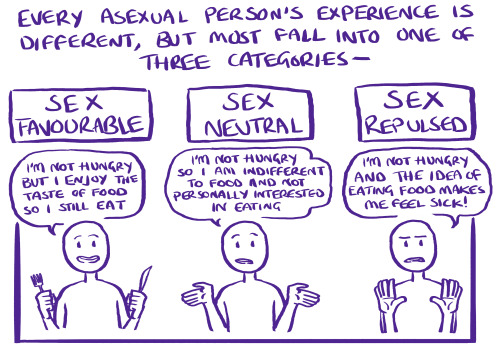The Late Rodentocene: 20 Million Years Post-establishment
The Late Rodentocene: 20 million years post-establishment

Ain't No Passing Craze: The Great Ecatorian Desert
The continent of Ecatoria is a lush, warm tropical region, fed and nourished by rainfall from the South Ecatorian Sea. But not all of it is drizzled with a constant supply of precipitation: west of the mid-Ecatorian mountain ranges lies an expanse of land shielded from storms and moisture, and thus is dry and arid: the Great Ecatorian Desert, the largest desert on HP-02017 in the Late Rodentocene.
It is a hot afternoon in the Ecatorian Desert, and Alpha shines scorchingly overhead. On the western horizon Beta slowly begins to set, as the two suns are now separated by half a day: the coming of spring. But while elsewhere on Ecatoria spring would be mild and rainy, here in the Ecatorian Desert the climate is scorching in the day and chilling in the night: and despite this conditions some specialized organisms are able to eke out an existence in this inhospitable land.
A dark shadow glides overhead: a predatory ratbat, scouring from the skies above for any small creature down below. Though a rodent, this flying hunter is akin to a hawk, having adapted tremendously keen eyesight to home in on any movement down below on ground level. Down below, there is nothing but an expanse of sand and dry grass for miles, punctuated only by occasional towering plants, somewhat resembling cacti but in truth are highly-derived grass. Even the plants of this seeded world have begun evolving to fit new niches, not merely a green background in a planet of animals, but themselves competitors in the evolutionary race.
The ratbat-of-prey spots movement down below and circles around to zero in on its target. However, it quickly breaks off the hunt and soars off in search for another, easier meal: its rejected quarry is far too big to tackle. A desert-dwelling descendant of the cavybaras, it is nearly the size of its ancestor and simply too large for the ratbat to carry off, and so the predator wisely departs, while the lumbering beast below briefly watches the departing figure in curiosity, gives a huffing snort of confusion, and then proceeds on its way.

The creature in question is a direct descendant of the cavybaras, that has evolved modified extensions of its lower incisors that grow outward of its mouth, forming tusks which it uses in digging for food and for self-defense. Known as the desert bumbaa (Scrofacricetus hakunae), it is one of the several species of the genus Scrofacricetus, with its other cousins having adapted to different biomes, such as the forest bumbaa (S. matatai) and the plains bumbaa (S. porcius), which thrive in other regions of Ecatoria. The desert bumbaa differes from its cousins by its larger ears and thinner, sparser coat, which helps it lose heat in the arid climate.
The desert bumbaa is an omnivore, feeding mostly on tough shrubs and cacti-analogues in the desert. However, it also greatly relishes insects, many of which nest in burrows or underneath rocks and logs, and so the bumbaa puts its tusks to great use to dig up an abundance of bugs, overturning driftwood and uprooting plants to get at its prize. And its messy eating habits attract the attention of another desert dweller, the banded meerca (Paramustelamys timonii), a small, insectivorous ferrat that has developed a bizarre, and mutualistic, relationship with the bumbaa.
While fond of feasting on bugs, the desert bumbaa itself is plagued by insects of a nastier kind: wingless, bloodsucking flies that have converged with ticks and fleas as external parasites of mammalian hosts. These bugs cause the bumbaa great discomfort, but that is when the meerca comes to the rescue: an avid insectivore, it not only feeds upon the escaping leftovers of bumbaas while they raid insect nests, but also plucks the pests off the bumbaa's thick hide, offering them relief. The bumbaas have learned to tolerate and even welcome their presence, actively seeking them out and laying down to be groomed from parasites, while the meercas follow bumbaas around to be led to insect nests which the bumbaas then dig up, allowing the tiny meercas to share access to a buffet of bugs otherwise out of their reach.
Another benefit the meercas gain from the company of their lumbering companion is protection from predators: and indeed, there is a specialized predator prowling this dessicated wasteland: the dwarf hamyena (Microcutamys minimus). Smaller than many of its other relatives across Ecatoria but no less a deadly hunter, this badger-sized predator is descended from the hammibals of ten million years prior, and specializes on small rodents- including meercas. However, a full-grown bumbaa is too much for them to handle, their sharp tusks potentially being wielded with lethal force: as such, as long as the bumbaas are around, the meercas are safe from their small but fearsome enemy.
Other rodents also thrive in the Ecatorian Desert: furbils and jerryboas, ever present throughout the planet in all their diversity, exist in numerous forms throughout the desert landscape, feeding on insects, seeds and cactus-analogues, which they chew through their tough outer skin to reach the water-rich tissues inside. Their large ears and long tails act as heat sinks to lose excess heat, while their pale fur reflects heat and camouflages them in the light-colored sandy soil.
These tiny rodents, in turn, form a major part of the diet of the desert's primary aerial hunter, the masked batzzard (Nyctaquilus aridus). With a wingspan of about four feet, this desert ratbat circles the daytime sky, seeking out small prey such as jerryboas, furbils and meercas, which it swoops down onto, pounces on with its wing claws, and dispatches with a bite from its sharp, stabbing incisors. Hooked talons on its forelimbs ensure that prey is unable to easily escape, attacking its targets with an unusual hunting strike partly like a hawk, and partly like a cat. While live bumbaas are far too big to deal with, dead ones certainly aren't off the menu, and groups of batzzards may occasionally congregate at a carcass, where, due to their normally solitary lifestyle, nearly all their social interaction takes place, such as courtship, mating and dominance posturing.
Even in this harsh, dry landscape, life on HP-02017 has found a way. A wide, diverse collection of life thrives in this barren wilderness, despite its challenges --competing, coexisting, and even cooperating with one another, to overcome the harsh and unforgiving trials of life in the Great Ecatorian Desert.
▪▪▪▪▪▪▪
More Posts from Enbylvania65000 and Others
The Late Rodentocene: 20 million years post-establishment

Island, You Land, We All Land: The Centralis Archipelago
In between the narrow strait separating the continents of Nodera and Easaterra lies a small group of five islands, that have been separated from the northeast peninsula of Easaterra for only 500,000 years. And yet in this in this relatively short span of time life has evolved in strange ways in these secluded islands: as islands in isolation become hotspots for unusual routes of evolution, and the Centralis Archipelago is no exception.
No other example illustrates this better than the badgebears of Isla Maslum, the largest and most northernmost of the islands that unlike the others was once part of the Noderan mainland. On the scrubland of southern Nodera lives the common striped badgebear (Badja badja badja), a lapdog-sized omnivorous ferrat that feeds on a wide range of available food. However, in the forests of Isla Maslum, lives a different subspecies: the insular striped badgebear (Badja badja maslum), still technically the same species as its mainland relative. However, the differences are obvious: the insular subspecies is at least three times as big as the mainland one, and is entirely herbivorous, feeding on fruit, seeds, and low-lying vegetation that grows in abundance close to the forest floor. In the absence of competition, the insular striped badgebear has filled an entirely new niche, despite otherwise still closely resembling its mainland subspecies in nearly every other respect save for size and diet.
Isla Maslum is also home to grazing hamtelopes, most notably a close relative of the rusty hamtelope, the painted hamtelope (Erythrocervimys piniata maslum). Free of competition from large grazing jerryboas the painted hamtelope is free to conquer the open grasslands of the eastern side of the island. Its conspicuous bright coloration is used in social signaling, with the lack of predators making camouflage less necessary.
Meanwhile, on the other islands live very unusual forms of ratbats, which spend most of their time hunting on the ground and only rarely and clumsily taking flight. It has not been long since the ratbats first evolved flight, and yet here in these islands some are already on their path to flightlessness. Having flown to these islands only 100,000 years ago, they quickly filled the niche of ground predator at the expense of their flying capabilities, and are now, for all intents and purposes, now confined to this isolated ecosystem.
On Isla Vodum lives the ground foxbat (Nyctovulpes kitsuni vodum), a Labrador-sized omnivore that forages on the forest floor for small rodents, insects, fruit and berries. Still capable of short bursts of flight to ascend trees, it is now by no means a significant flyer, unlike its relatives on the Easaterran mainland, which, as with the badgebears, are technically the same species, but now in a subspecies behaviorally different from its still-extant forebearers.
Meanwhile on Isla Dolum lives another insular ratbat, that has independently began losing its flight as well. Known as the Dolumian catratbat (Nyctoailurus felinoides dolum), this tiny carnivore is about as big as a small housecat, and is an avid predator of the numerous abundant furbils and duskmice that are endemic and plentiful on the island. Hunting its prey on the ground, it has almost all but lost its ability to fly: an unnecessary expenditure whose energy is better spent toward better running, after its grounded quarry.
However, despite these unique adaptations that they have developed, the endemic fauna of the Centralis Archipelago have essentially backed themselves into a spot of trouble. Evolving in isolation, they have lost many of their abilities to deal with competitors: and should the islands reconnect with the mainland in the distant future, these strange new pioneers may struggle in the face of new adversity: forced to adapt, or go extinct trying.
▪▪▪▪▪▪▪▪
The Late Rodentocene: 20 million years post-establishment

Riffing the Reefs: Marine Life of the Late Rodentocene
HP-02017 is easily thought of as a planet of hamsters, but other life also thrives. The ecosystem's accessory organisms released onto the planet have since formed ecosystems of their own, equally players in the game of life as the hamsters are, and nowhere is this more evident than the shallow seas of the Late Rodentocene.
At first glance, the reefs that grow in the sunlit shallows of the planet's seas look incredibly like those of our own. Forests of algae and kelp grow in the rocks close to shore, as well as corals of all shapes and sizes that sprout in great masses, forming reefs that serve as a shelter for small, colorful sea creatures that thrive in abundance. Yet despite its initial familiarity, the marine biomes of HP-02017 are anything but: its similarities are superficial, and its creatures are something else entirely.

Only a choice few organisms were seeded into the seas: small mollusks such as sea snails and bivalves, as well as sponges and corals, which at first were from but a small collection that have since diversified into a dazzling array. But with so few creatures, and so many empty niches, it didn't take long for the choice few colonists to explode into a diversity rivalling that of Earth's oceans.
Corals, which reproduced via free-swimming planktonic larvae, have filled the empty spaces of their relatives the cnidarians, with some forms becoming tentacled stinging sessile hunters akin to sea anemones, while other drifting larvae become neotenic, remaining in their mobile forms into adulthood and become the transparent, drifting mock jellies.
The humble sea snail has also seen an extreme explosion of diversity in the past 20 million years, spawning thousands of species that came to fill nearly every marine invertebrate niche imaginable. Some lost their shells, coming to resemble sea slugs, and many of which would develop bright body colors for display or as warning coloration, converging heavily on nudibranches present in Earth's oceans. Other snails, developing flattened bodies and a unique vascular system in their belly-foot, become heavily convergent on echinoderms, with some being long-bodied bottom feeders like sea cucumbers, others developing venomous spines akin to urchins, and one strange lineage, developing vaguely-arm-like protrusions on their foot and a radula adapted for feeding on bivalves, becoming a bizarre analogue of a starfish. Others become tentacled swimmers resembling shelled cephalopods: the notiluses.

But by far the most diverse and successful invertebrate clade in the planet's oceans are descendants of planktonic krill, which, in the absence of fish, exploded in diversity to fill as many aquatic niches as they can. Known as shrish, these peculiar crustaceans first emerge as shrimp-like swimmers that propelled themselves through the water with a paddling array of feathery swimming legs.
As they evolved even further, however, they began taking on peculiar niches as time went on. Bottom feeders such as the trilobug became broad and flat, filling roles akin to flatfish or crabs, and some of these bottom-dwellers secondarily re-evolved to become active swimmers, such as the filter-feeding shringray that defends itself with venomous barbs on its tail. Others became elongated, flexible centipede-like predators that hunted other shrish, lurking in caverns in coral much like moray eels in wait to ambush their prey, known as the shreels.
Some shreels would eventually develop a shorter and more streamlined body, and give rise to active swimmers that propelled themselves with undulating waves of their abdomen and tail. Becoming a more efficient means of propulsion with larger or faster species, these paddletailed shrish would eventually modify their rearmost swimming legs along with their tail fan into a caudal fluke of sorts, while their thoracic limbs became used for catching food or filtering particles from water. This lineage of paddletailed shrish would eventually bring about the biggest top predators of the Late Rodentocene seas, the shrarks. Using their barbed rostrums and spiked forelimbs as three grabbing "jaws", the shrarks reach lengths of almost a meter: rivalling the largest marine arthropods of Earth's history, the eurypterids of the Devonian era.
The reefs of the Late Rodentocene are a vast and diverse ecosystem that flourishes in strange new ways independently of the world of rodents above. Life in the ocean takes on unusual new forms in a biome not yet invaded by the hamsters -- at least for the time being.
▪▪▪▪▪▪▪▪▪

About 7,000 years ago, a vast lake spread hundreds of square kilometers across north-central Africa. Known to scientists as Lake Mega Chad, it covered more than 400,000 square kilometers (150,000 square miles) at its peak, making it slightly larger than the Caspian Sea, the biggest lake on Earth today.
you know what, i’m about to say it
it’s not just expecting jews to be or proclaim to being pro-palestine/anti-israel/antizionist that is antisemitic, it’s also expecting them to hold or proclaim to holding perfect pro-palestine/anti-israel/antizionist views and politics all the time. and by ‘perfect’ i certainly don’t mean sensible, nuanced, or productive views and politics, i mean views and politics that unchallengingly espouse the mainstream narrative of a solidarity movement riddled with antisemitism. pro-palestine jews become agents of zionism the second they express the slightest discomfort at the unchecked and rampant antisemitism in the movement, the tokenization of their activism, the exterminatory rhetoric surrounding israel, the use of material produced by people with a history of antisemitism, the abuses of bds, the support for deeply antisemitic & armed religious movements, the celebration of people who killed civilians, the erasure of jewish diversity, history and culture, the denial of antisemitism from the holocaust to the jewish exodus from muslim countries, the inappropriate and ahistorical nazi comparisons, the toxic strategies used to dodge accusations of antisemitism - i could go on. expecting jews to be uncritical supporters of a movement in which antisemitism - that is, for those who forget, anti-jewish racism - has such a large audience and amount of offenders, that’s antisemitism, always.
The Middle Rodentocene: 10 million years post-establishment

Better Ungulate than Never: The Hamtelopes
A small, but abundant and diverse herbivore common across the land during the Middle Rodentocene are the hamtelopes (family Cervimuridae), which are found on most of the continents by this point in the planet's history. Looking a fair bit like small ungulates, hamtelopes are browsers, feeding on higher vegetation such as bushes and shrubs, and thus avoid competition with grazing cavybaras when the two coexist on the same turf.
Among the many species of hamtelopes, the most remarkable is the Rusty Hamtelope (Erythrocervimys bambini), which is unmistakable due to its distinctive reddish-orange hue of its coat. On Earth, such a color for a forest-floor browser would be highly disavadvantageous, sticking the animal out into plain sight and leaving it vulnerable and visible to predators.
However, HP-02017 is distinguished by the presence of a second minor sun, Beta, that orbits further out from the main sun Alpha and for a large portion of the year is opposite the main star, making Beta appear by night and illuminate the landscape in a phenomenon called "Beta-twilight". Beta-twilight is when the rusty hamtelope is at its most active, as well as dawn and dusk: and in the fiery glows of sunrise and sunset, or the red-orange Beta-twilight landscape, the rusty hamtelope demonstrates that Earthly life can adapt even in conditions not normally found in Earth, camouflaging perfectly in the forest floor while the forest is bathed in a faint, scarlet hue.

But as remarkable as the rusty hamtelope is, the clade of hamtelopes is not merely limited to this one genus. Hamtelopes have reached peak diversity in the Middle Rodentocene, spanning several genera and dozens of species. Some, such as the long-legged ratzelles (Cervicricetus spp.) are daytime grazers of the forest floor, and indeed even share habitat with the rusty hamtelope by different times of activity to minimize competition. Others, such as the ramsters (Capramys spp.) are more at home in the alpine tundras and high plateaus, leaving a lifestyle akin to that of mountain goats, agile and surefooted as they climb up steep cliffs to graze on mountainside vegetation.
But by far the most unusual members are the toponies (Microhippoides spp.) which are plains-dwellers resembling tiny, tailless equids. What makes them particularly odd is how small they are, compared to the other genera: this in fact is due to competition with larger, bipedal hopping jerryboas that have usurped their niche out in the open plains. Able to travel longer distances with their more energy-efficient bounding gait and defend themselves from predation with sharp hind-limb claws, the jerryboas very quickly dominated the open grassland and savannah, leaving only the niche of small grazer vacant for the toponies.
As new lineages emerge and diversify in the Middle Rodentocene, their more divergent forms begin to clash with one another in ecological terms. In the end, some families will dominate, others will barely hang on and others will completely die out, as hamster diversity climaxes in the Rodentocene's halfway mark.
▪▪▪▪▪▪▪▪▪▪
Player: "I'm upset that [NPCs who sprung an accidently fatal trap for thieves] are dead, but I'm more upset that [NPC, antagonistic] is trying to guilt us over it."
Player2, Resident Moral Compass: "Yeah!"
Big mood
All of my worldbuilding projects remind me too much of what is going on for me to be able to work on any of them.
Feeling weird about being an angst writer at the moment
How can I enjoy guiding characters through The Horrors when those same horrors really are being inflicted on my people and possibly my friends, without the neat closure of being saved by a mentor or brought closer with a lover or receiving the comfort and catharsis to heal?
It's definitely not like I can't write other types of story - the play I wrote and directed is a romantic drama comedy, the opera I'm working on is G&S-inspired with only a little vulnerable-hero-in-deadly-peril, and I have concepts in various stages of development in all genres and styles.
But one of my favourite tropes suddenly feeling off-limits as I'm already behind on many stories that involve it is... very unbalancing.
Update on me and this tumblr
TL;DR: I am coming back to tumblr but also kind of not really. Also I have no idea how to use this site or what I’m doing I stopped using this account because of I wanted to avoid a flood of bad takes about the Russia-Ukraine War. I thought I won’t come back until the war is over, but I underestimated how long that would take and I suppose by now the flood of takes are over.
I’m still not going to blog politics here; if you want my political opinions I’d be happy to share them on Discord. This blog is for random cool stuff and worldbuilding. Also since I haven’t really been active since June last year there’s probably all sorts of changes to tumblr and to my friends that I’m unaware about. I’d like to know more. Definitely a lot has changed, for both good and bad, in my life since then.
Probably still will be a little inactive in the near future because I’m low on ideas and motivation for worldbuilding.




after the huge amazing response I got from my ace!Jiang Cheng comic - all of the ace people saying how amazing it felt to be acknowledged, and all of the people who came to me saying that they hadn’t realised they were ace until they read the comic - I decided I wanted to make something for ace awareness week. it’s not quite as pretty or feelsy as the other comic, but there are so many people even within the LGBT+ community who just… genuinely do not understand asexuality, I figured even something basic would help :)
happy ace awareness week! please remember: everyone’s experience with sexuality is different! be kind and support each other!
the rise in antisemitism rn is like looking up and seeing wolves mixed in with sheep in wolves clothing. if you don't want to kill me why are you dressing like you do?
-
 nolimitjayski24 liked this · 1 month ago
nolimitjayski24 liked this · 1 month ago -
 arcasvethix liked this · 4 months ago
arcasvethix liked this · 4 months ago -
 keresacheron liked this · 8 months ago
keresacheron liked this · 8 months ago -
 el-recaptas liked this · 9 months ago
el-recaptas liked this · 9 months ago -
 magnificentlilywitch liked this · 1 year ago
magnificentlilywitch liked this · 1 year ago -
 jcknil liked this · 1 year ago
jcknil liked this · 1 year ago -
 monster-creator-12 liked this · 1 year ago
monster-creator-12 liked this · 1 year ago -
 eldritch-orange liked this · 2 years ago
eldritch-orange liked this · 2 years ago -
 rodent178 liked this · 2 years ago
rodent178 liked this · 2 years ago -
 darkwingphoenix liked this · 2 years ago
darkwingphoenix liked this · 2 years ago -
 pseudosnakefansblog liked this · 2 years ago
pseudosnakefansblog liked this · 2 years ago -
 jarrax355 liked this · 2 years ago
jarrax355 liked this · 2 years ago -
 trashysaur1125 liked this · 2 years ago
trashysaur1125 liked this · 2 years ago -
 aotheovergod liked this · 2 years ago
aotheovergod liked this · 2 years ago -
 captaintoast liked this · 2 years ago
captaintoast liked this · 2 years ago -
 wisestarfishtale liked this · 2 years ago
wisestarfishtale liked this · 2 years ago -
 manoszilla399 liked this · 2 years ago
manoszilla399 liked this · 2 years ago -
 aem9phase liked this · 3 years ago
aem9phase liked this · 3 years ago -
 smb62 liked this · 3 years ago
smb62 liked this · 3 years ago -
 crowjack20 liked this · 3 years ago
crowjack20 liked this · 3 years ago -
 galojou liked this · 3 years ago
galojou liked this · 3 years ago -
 canine-cosmonaut liked this · 3 years ago
canine-cosmonaut liked this · 3 years ago -
 tundragravedigger liked this · 3 years ago
tundragravedigger liked this · 3 years ago -
 littlemooncity liked this · 3 years ago
littlemooncity liked this · 3 years ago -
 boolahboosh liked this · 3 years ago
boolahboosh liked this · 3 years ago -
 capnportofficial reblogged this · 3 years ago
capnportofficial reblogged this · 3 years ago -
 capnportofficial liked this · 3 years ago
capnportofficial liked this · 3 years ago -
 kenzietensei liked this · 3 years ago
kenzietensei liked this · 3 years ago -
 constantinopolitan liked this · 3 years ago
constantinopolitan liked this · 3 years ago -
 kobold-king liked this · 3 years ago
kobold-king liked this · 3 years ago -
 bestia-02 liked this · 3 years ago
bestia-02 liked this · 3 years ago -
 ajaajka liked this · 3 years ago
ajaajka liked this · 3 years ago -
 cdbeetle43 liked this · 4 years ago
cdbeetle43 liked this · 4 years ago -
 thoughts-are-complicated liked this · 4 years ago
thoughts-are-complicated liked this · 4 years ago -
 cannotfindagoodusername liked this · 4 years ago
cannotfindagoodusername liked this · 4 years ago -
 enbylvania65000 liked this · 4 years ago
enbylvania65000 liked this · 4 years ago -
 enbylvania65000 reblogged this · 4 years ago
enbylvania65000 reblogged this · 4 years ago -
 itg15 liked this · 4 years ago
itg15 liked this · 4 years ago -
 discovoyblends liked this · 4 years ago
discovoyblends liked this · 4 years ago -
 thebamboozlerblr-blog liked this · 4 years ago
thebamboozlerblr-blog liked this · 4 years ago -
 racoonmaster88 liked this · 4 years ago
racoonmaster88 liked this · 4 years ago -
 selkramazed reblogged this · 4 years ago
selkramazed reblogged this · 4 years ago -
 unidentifiablelifeform liked this · 4 years ago
unidentifiablelifeform liked this · 4 years ago -
 creaturedeityendless liked this · 4 years ago
creaturedeityendless liked this · 4 years ago -
 iamthekaijuking liked this · 4 years ago
iamthekaijuking liked this · 4 years ago -
 tribbetherium reblogged this · 4 years ago
tribbetherium reblogged this · 4 years ago
